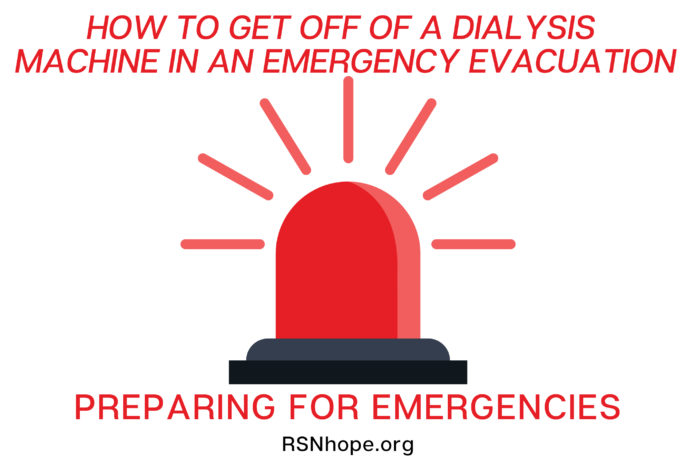Your dialysis facility staff should show you what to do if you are on a dialysis machine in an emergency. The instructions should include where your emergency pack is kept and how to disconnect yourself from the dialysis machine. An emergency pack usually contains scissors, tape, clamps and other medical items and should be kept within your reach while you are on the dialysis machine.
If you are on a dialysis machine during an emergency, stay calm and wait for instructions from the facility staff. If no staff person is available to help you or give you directions, here is what to do. Remember, these directions are for emergency evacuation situations only. Your access needles should be left in place until you get to a safe place. NEVER cut your access needle lines.
How to Clamp and Disconnect
Clamp both access needle lines.
Clamp both of the thicker blood lines.
⇒If the lines have pinch clamps, pinch all four clamps closed. Cut or unscrew the lines between the closed clamps. If you must cut your lines, cut ONLY the thicker blood lines.
⇒NEVER, NEVER cut your access needle lines.
⇒NEVER cut the line between the clamp and your access—you will bleed to death.
⇒If you have a CATHETER, your professional staff should assist you.
⇒Do not try to disconnect yourself.
Care of Your Access in an Emergency
After you have been disconnected from your dialysis machine, go to the designated safe area. Wait for directions from the person in charge. This person could be a dialysis facility staff member, or emergency personnel such as a paramedic, police officer, or firefighter. Do not remove your fistula needles until you have been checked by medical personnel, or until you are sure that you are in an area out of immediate danger.
Under no circumstances should any medical personnel unfamiliar with your dialysis status place or inject anything into your vascular access.
Information obtained from The Centers for Medicare & Medicaid Services (CMS) booklet “Preparing for Emergencies: A Guide for People on Dialysis.” Go to this link for the full guide: https://www.rsnhope.com/resources/emergency_preparedness_information.php
02/28/2007
Web ID 388


